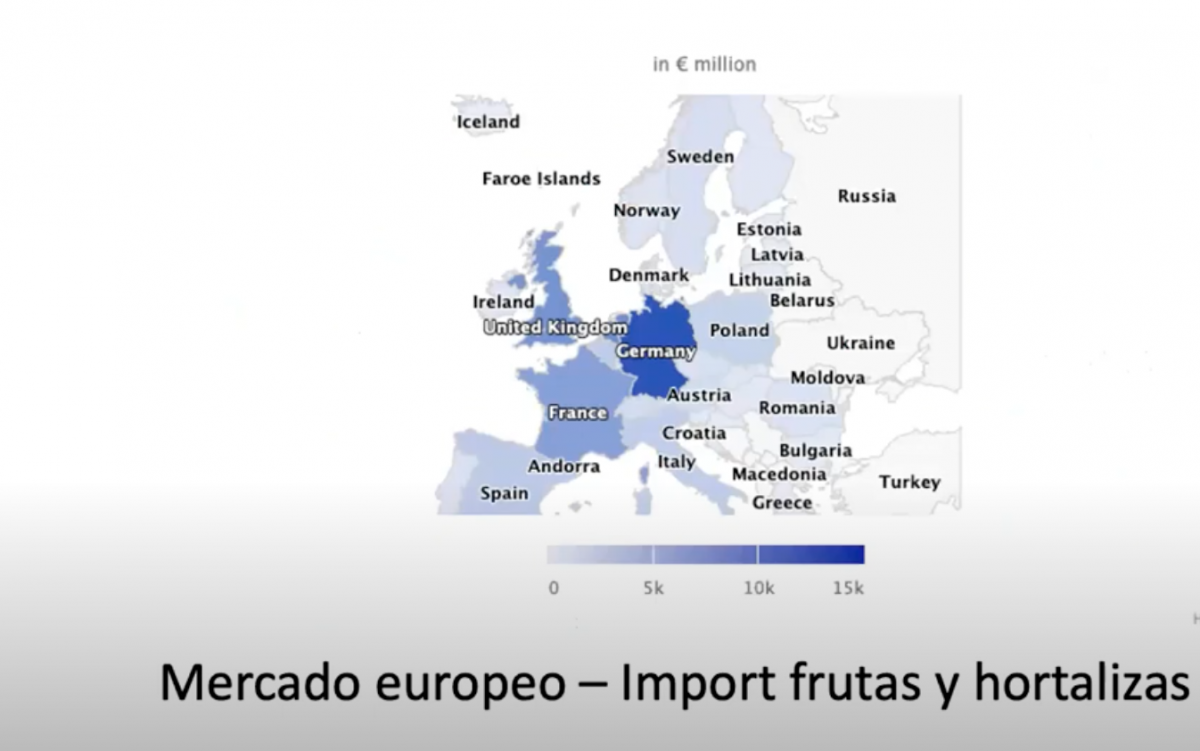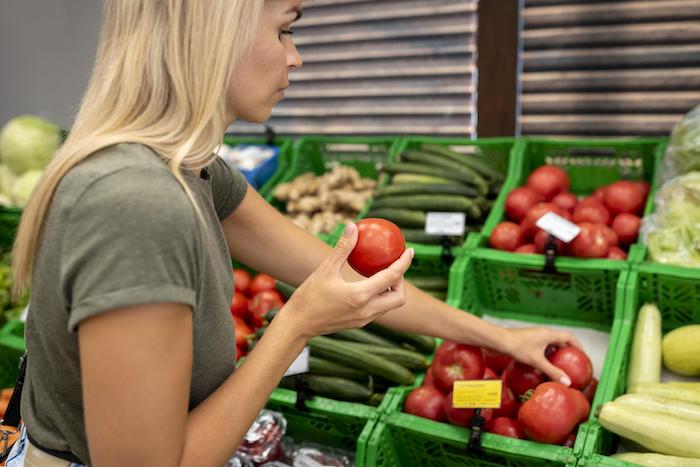This was stated by Enrico Turoni, president of Cermac since 2004, a consortium that deals with the international promotion of technologies for agriculture and agri-food, during the webinar "Opportunities and trends for Latin America in the European market".
Turoni did not hesitate to point out that, although the market is currently experiencing moderate growth in Europe and the United States (it has been declining due to various international crises), he anticipates that the trade situation will be regularized in less than a year.
The speaker also said that containers are dropping considerably in price since the pandemic, and although this may seem like good news, he said it also means that the world market is sending fewer containers because of the crises.
However, the fruit and vegetable trade foresees a rise in the following years, following the trend it has led so far.
"There are many factors that contribute to the ease with which today we can realistically ship products across continents in order to reach the consumer before expiration without changing the texture, nutritional value and taste," he said during his presentation.
Ginger is a very representative example, as its consumption in the European market has grown in the last four years and it is estimated that by 2026 it will at least continue to do so. Among the most consumed presentations of ginger in the European market, fresh ginger predominates, followed by dried and finally preserved ginger. Meanwhile, ginger oil and other forms are the least demanded at the moment.
The consumption of fruits and vegetables currently plays an important role in providing a diversified and nutritious diet, as they account for 32% of the world's population's daily diet.
Read more: Opportunities for the food sector in the Scandinavian market
Below you can see the map of the main European countries that are major importers of fruit and vegetables, including Germany, the United Kingdom, France (re-export to Europe) and Spain.

What are European markets looking for in the food sector?
Health awareness is an important factor driving sales of organic fruit and vegetables, especially in Germany, Switzerland, Austria and Sweden.
In southern Europe, consumers consider taste to be more important than the visual quality of the product.
Enrico also presented trends regarding these tropical products in the European market, such as:
- The increasing interest in new and exotic fruits.
- The interest in fruits and vegetables produced with sustainable and responsible practices.
- The reduction in the use of plastic packaging
- The dried fruit market has also grown.
- E-commerce is gaining market share every year
- Seasonal production gaps in some countries due to climate conditions
What opportunities are there for the fruit and vegetable market?
To understand how to enter the European market, it is necessary to analyze which are currently the main countries that import more products of this type to the continent.
For example, the following countries import vegetables to Europe: Morocco, South Africa, Peru, Costa Rica and Colombia. Meanwhile, among the countries that import most fruit to Europe are Peru, Morocco, Colombia and Egypt.
Among the products that have been imported the most and are on the rise since 2018 are bananas, avocado, mango, papaya, pitahaya, grapes, blueberry, oranges, pineapples and tomatoes
However there are still options of tropical products with promising prospects for export such as: beans, peas, strawberries, cherimoya, peppers, coconut, legumes, ginger and more.
If you want to learn more about what the European market is looking for and how to start exploring this journey, we invite you to watch the full webinar and keep an eye out for events organized by ConnectAmericas such as LAC Flavors, the most important food and beverage industry event of the year that took place in Panama for the 2022 edition.
Also, here you can watch all the purchasing announcements in the food and beverage sector.



Follow Us